KNIT MAGAZINE
- Knit Pattern
Understanding Intarsia: Knitting Artistry and Technique

- Post date:
- April 9, 2024 07:00
- (Update: March 18, 2024 04:17)
KNIT MAGAZINE


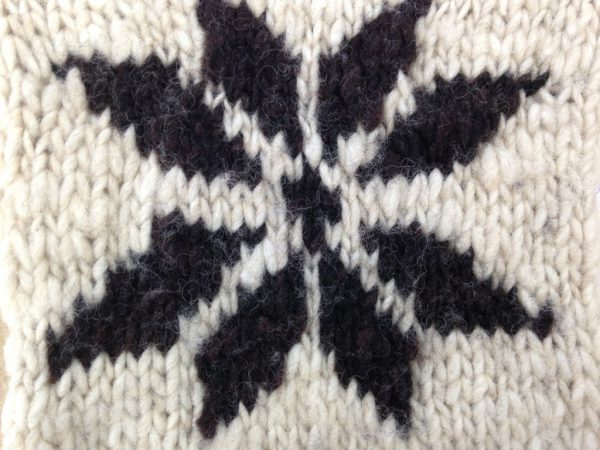
This time, I would like to explain about the intarsia pattern of knitting.
Table of Contents
The intarsia pattern is a knitting technique where yarns are switched and knitted within the fabric.
This allows for the incorporation of large color patterns or logos into the knit.
The method of knitting the pattern differs from the jacquard pattern in that yarns are switched along the pattern, resulting in a seamless finish.
In contrast, jacquard knitting involves crossing and exposing yarns, meaning the pattern yarn is continuously knitted throughout.
As a result, knitted fabric may become thicker and the thread color on the reverse side may be faintly visible.
Click here for details.
What you can and cannot do with jacquard knitting | Points and precautions
Introducing how to add color with knit, intarsia, and double jacquard.
Intarsia is primarily utilized in jersey stitch fabrications. As threads are switched and employed, both patterned and non-patterned sections can be knitted with a jersey stitch, resulting in a thin, tidy appearance with a neat and beautiful pattern.
For instance, it’s ideal for conveying distinct line patterns like characters, large logos, or letters. It’s particularly fitting for creating a single-point pattern.

Since the intarsia pattern involves switching threads, it necessitates numerous machine clues (components through which threads pass). However, the availability of machines capable of knitting intarsia is limited. Thus, it’s essential to confirm a factory’s capabilities before making requests.

The number of thread nails required depends on whether threads are switched in the same course in the fabric. For instance, in the pictured pattern, up to 9 thread switches are needed, each knitted without crossing threads. This complexity, along with yarn management and manual labor, contributes to the higher cost of intarsia knitting.
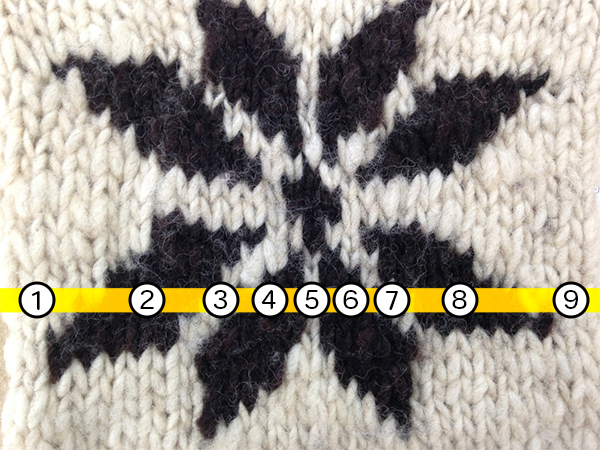
Is it nearly impossible to create intricate patterns, do you believe?
Actually, not all patterns require intarsia. For instance, the mentioned pattern has just one or two stitches in the center. In such cases, you can minimize pattern changes by passing the thread on the back using single jacquard knitting exclusively in the center.
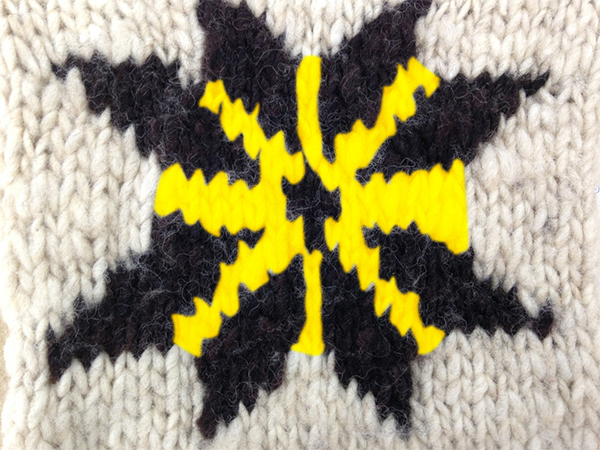
In intarsia knitting, the pattern is mirrored on the back just as it is on the front. However, with partial jacquard knitting, thread crossovers only occur within the pattern section, like this.
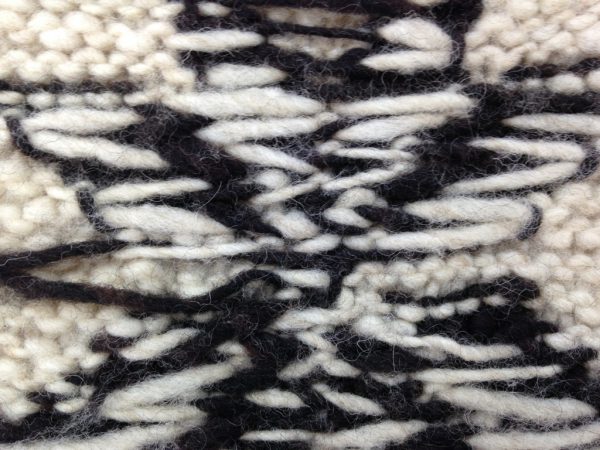
By doing this, the number of yarn changes is minimized, resulting in fewer machine clues and threads, making knitting easier and faster, thus reducing costs.
Finer patterns pose greater production challenges, but slight thickness variations are often imperceptible. This technique is known as an intarsia card. In an intarsia card, the outer frame is done using intarsia, while inner details are knitted with jacquard.
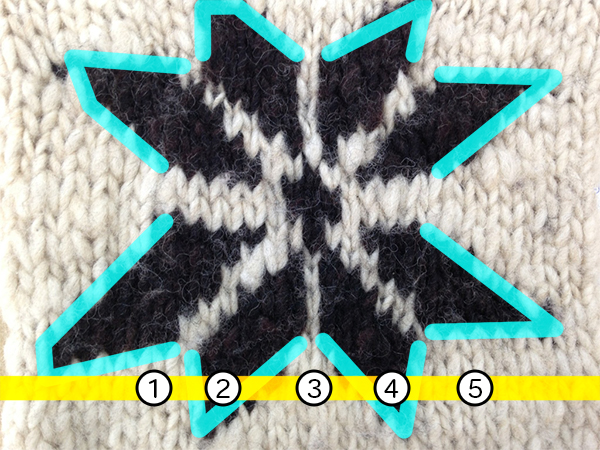
By doing this, there are 5 thread switches, making knitting easier.
With this thickness, clarity might be difficult, so it’s beneficial to let the thread cross part ③ as well. Then, the number of threads to switch reduces to three. One concern with intarsia jacquard is that without thread insertion along the pattern, front view discomfort may arise. Careful consideration of pattern framing and feasible switch points is advisable.

For example, this pattern is switched around the pattern as round as possible along the pattern.
The upper part of the handle is crossed along the line as much as possible, and there are three switching threads.

Intarsia was once a craftsmanship practiced by artisans who intricately knit patterns by manually switching threads when hand-held machines dominated production. Though relatively rare now, fabrics created this way are delicate and exquisitely beautiful. While intarsia knits are somewhat limited, I aim to refine patterns to enhance their perfection.
Subscribe Now
To receive the latest updates and insights, subscribe to our newsletter.
Contact Us
For further inquiries regarding this article, please feel free to contact us.